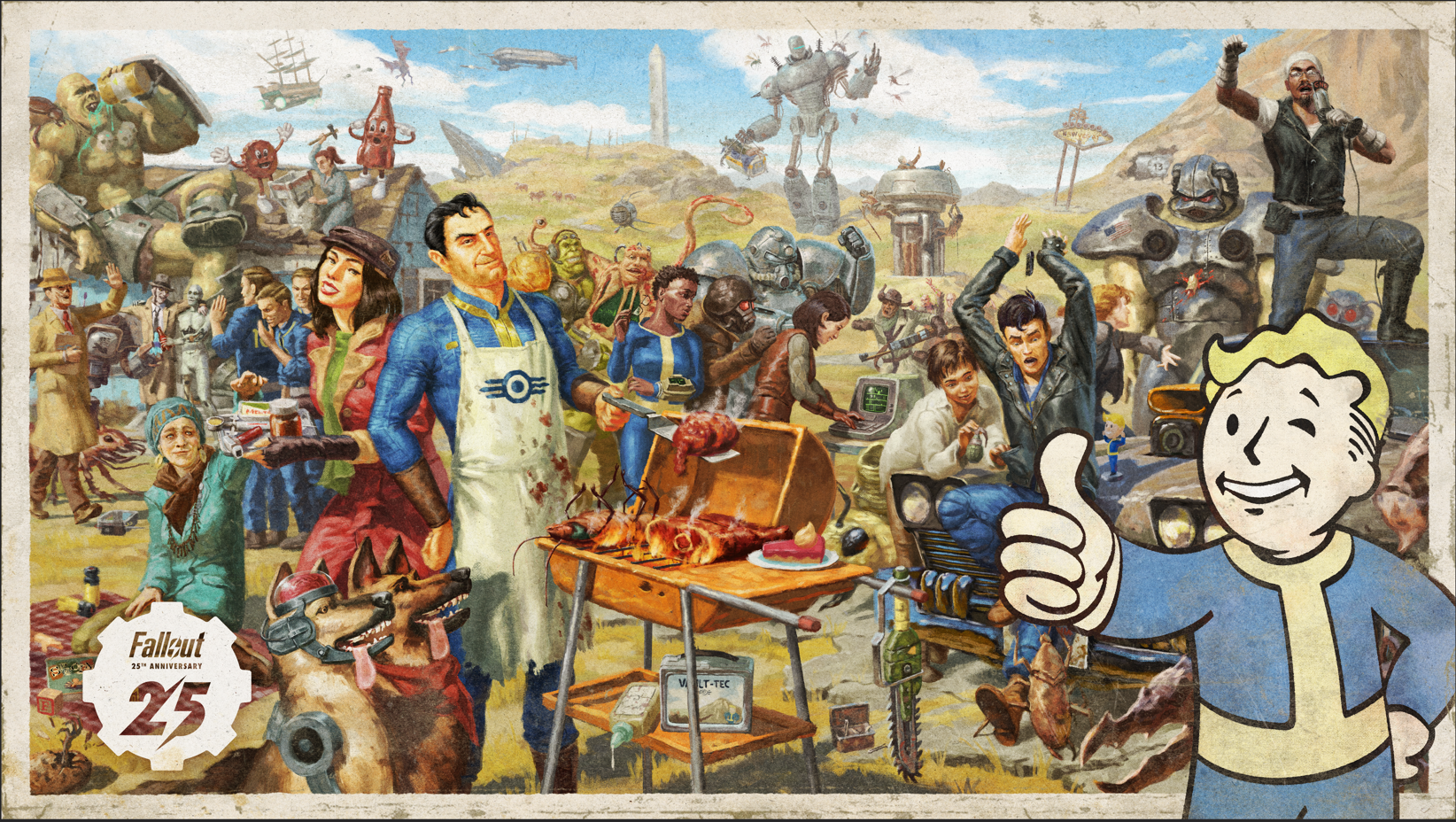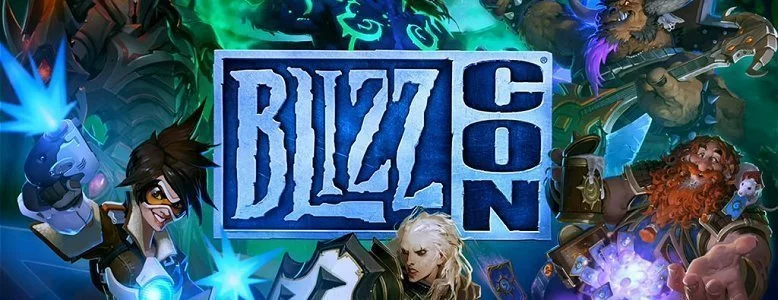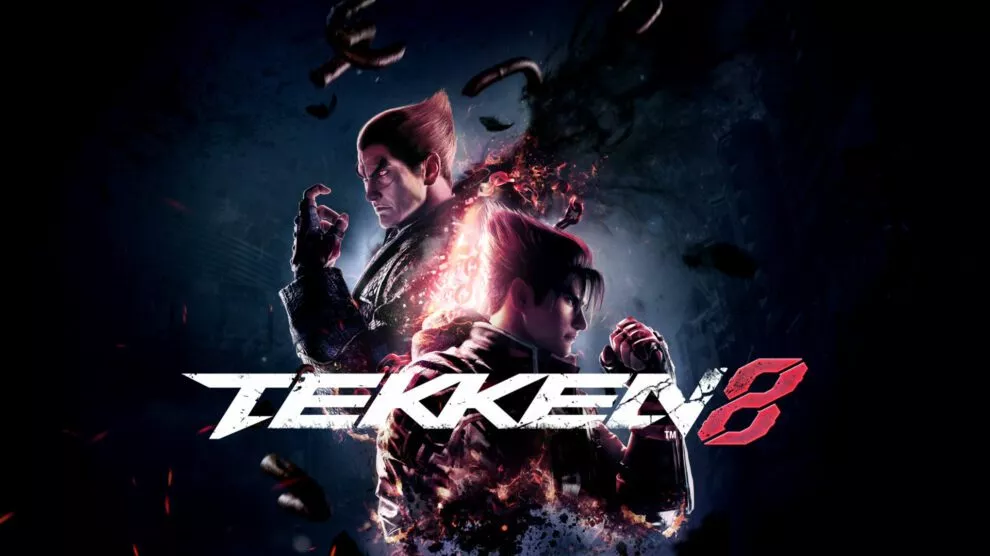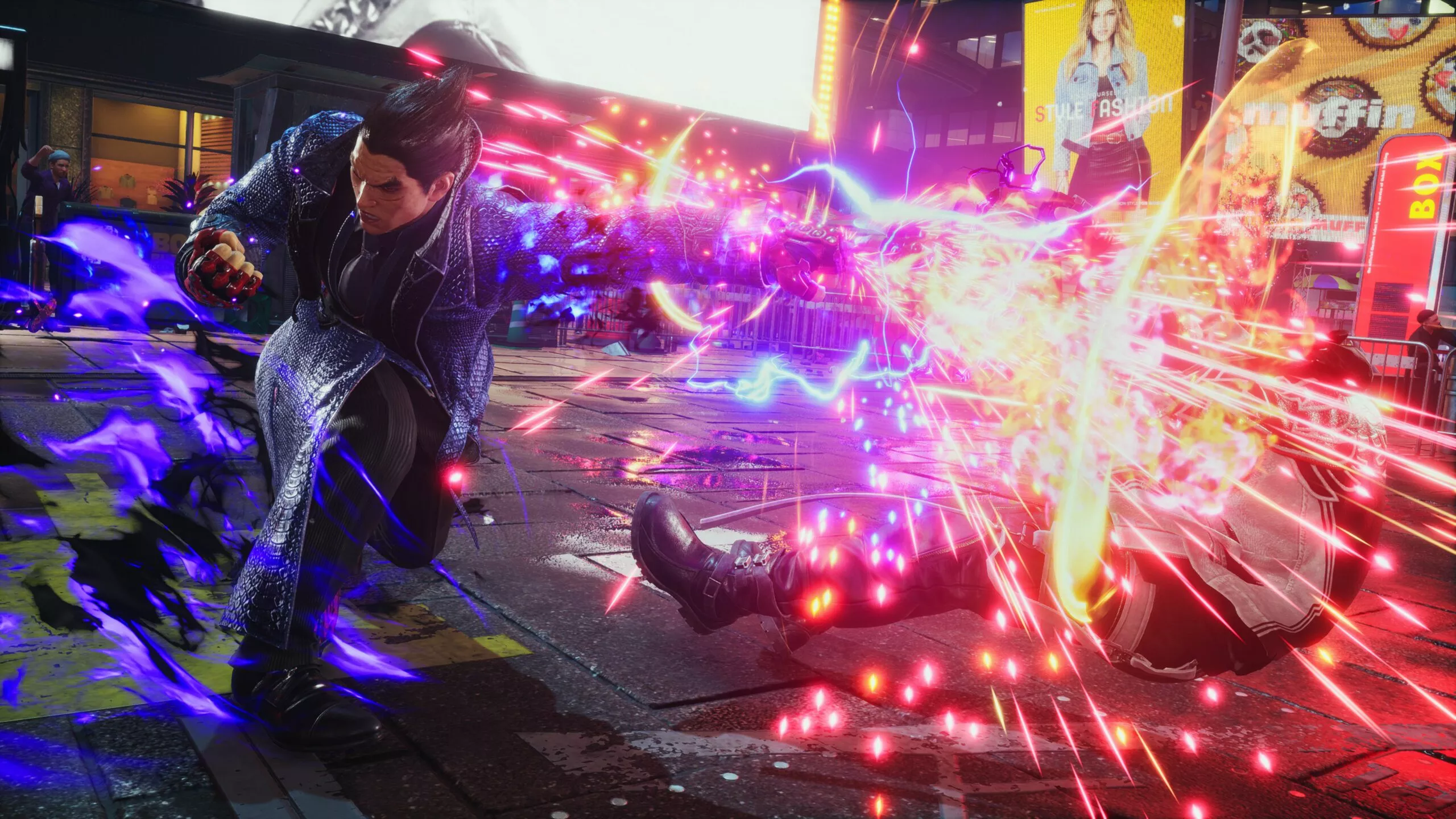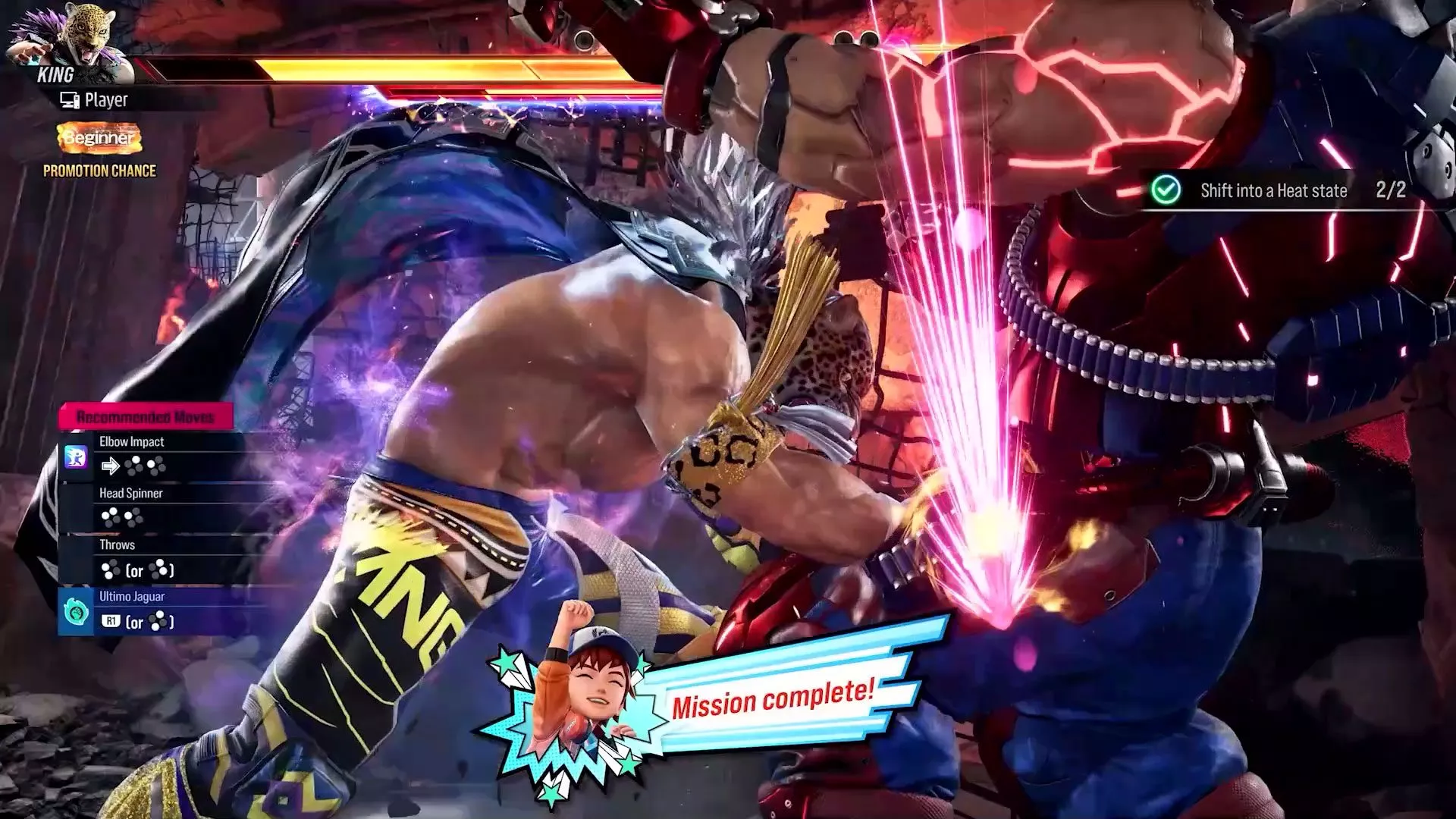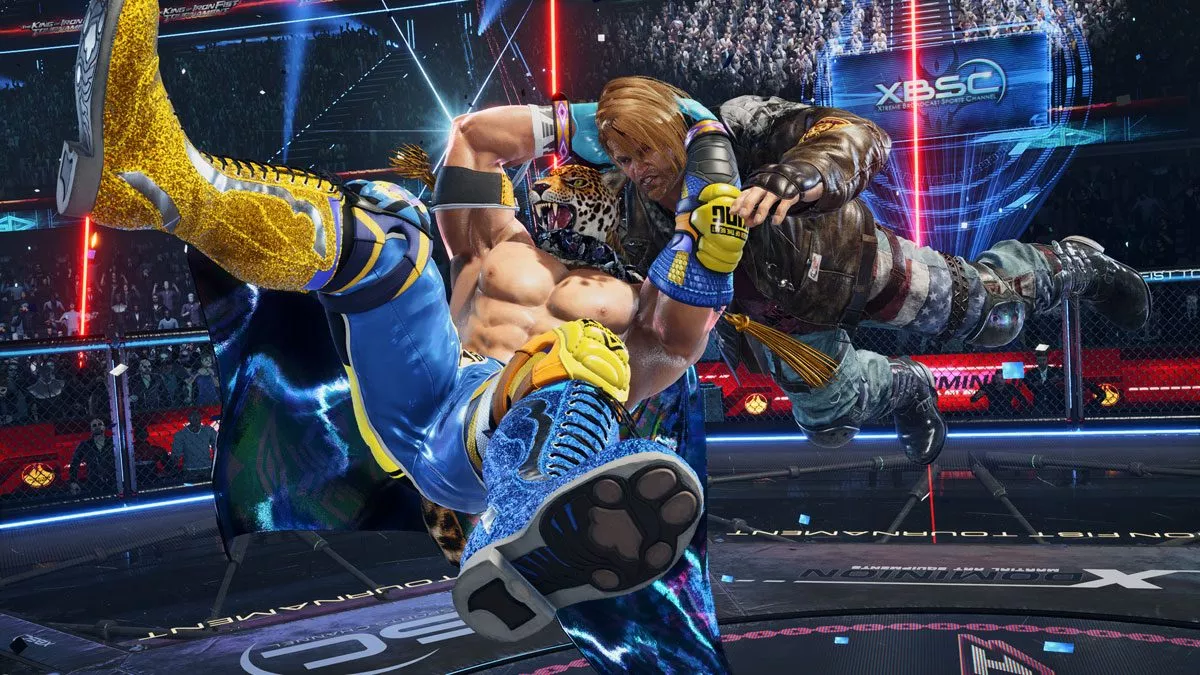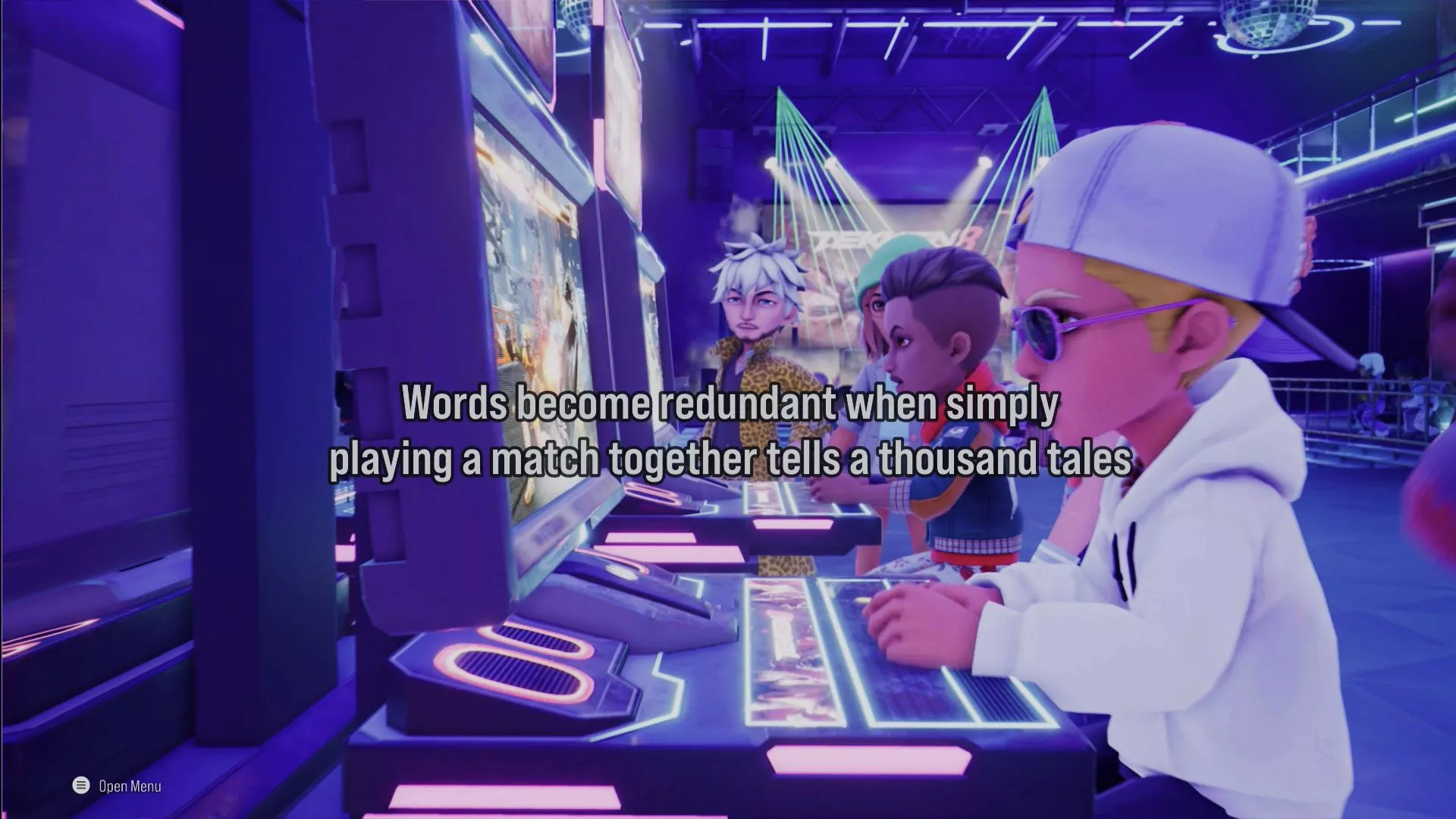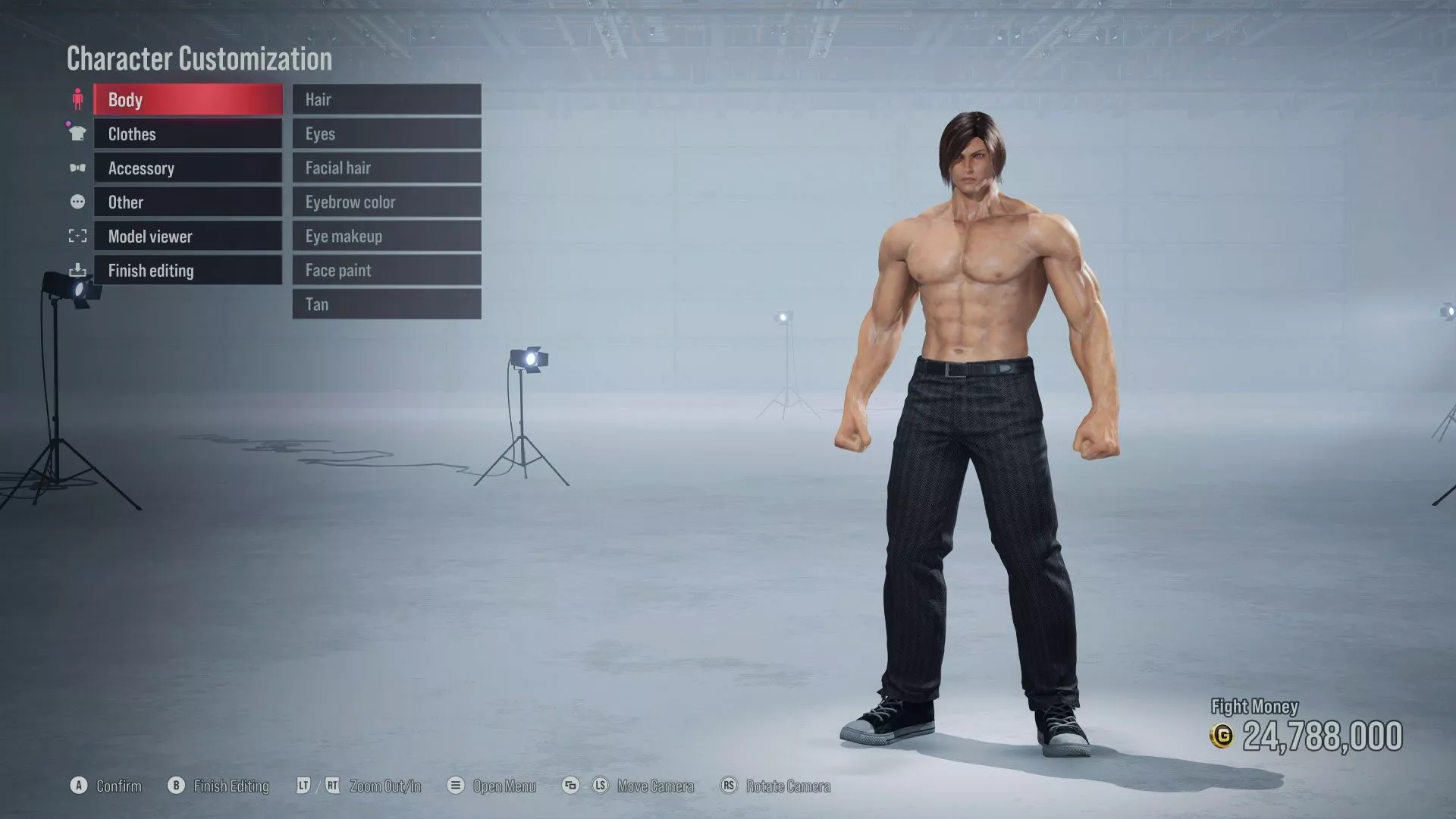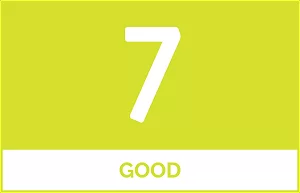I remember playing the Tekken series on the original PS1 as a kid, but I couldn’t tell you a single thing about its story (apart that it has a tiger man named King and that I had a crush on Hwoarang before I knew I was gay). I gobbled it up in equal measure as Mortal Kombat and Street Fighter, but for some reason the concept of the King of Iron First tournament refused to stick in my head.
Both years and sequels later, recaps have shown me Tekken is nothing more than a Sentai-fueled version of Succession: no matter the iteration, it boils down to a family fighting for control of a demonically powered corporation that’s hellbent on taking over the world. The only real difference is that the likes of Jin Kazama and Kazuya Mishima strike some truly epic poses as they battle it out.
As is the norm with fighters in 2024, Tekken 8 goes far beyond a simple versus mode. A story mode liberally borrows from the work Mortal Kombat has put in in its last few iterations, while Arcade Quest does the same with Street Fighter 6‘s Battle Hub.
Super Ghost Battles are found within Arcade Quest (and as a separate option in the menu once you try it out) and centre around AI learning to create a carbon copy of you and your fighting style. Tekken Ball makes a reappearance for those who want to bunch beach balls instead of opponents, and standard versus stuff is of course still in the mix too.
In one world, Story mode is outlandish. It — any every other mode in Tekken 8 — looks beautiful, but Bandai Namco doesn’t quite package it all up as well as I would have liked. Transitions between cutscenes and actual fights aren’t nearly as slick as in Mortal Kombat; several cutscene packages are over saturated and pull you out of the narrative.
As I said before, most cutscenes are as if ripped straight from a Super Sentai story: superpowered beings in over-the-top costumes pose dramatically as they pull off flashy moves and shout some truly cringeworthy dialogue as emotive strings provide an epic backing soundtrack. That’s not to say that’s bad… it’s just a very specific vibe.
As Joab also noted in his preview, the characters in Tekken 8 speak multiple languages including English, Japanese, French, and German. Every character easily understands one another without any language barrier whatsoever. As a viewer, the choice to feature all these languages at once is equal parts novel and distracting; you can’t take your eyes away from the screen in case you miss out on what’s going on.
There are a lot of long exposition dumps, especially early on; learning who characters are and getting that all backstory straight can prove difficult. In fact, there are simply too many characters at most points, all just thrown in there, and it’s hard to really feel for them or worry about stakes.
There’s certainly a desire to hit the same heights as seen within the Mortal Kombat series of late, but Tekken 8 falls short of the mark. Chapter 5 is literally just playing through the actual King of Iron Fist tournament, fight by fight, and seems a bit by the numbers. During this sequence, two female fighters have nothing better to do in their battle besides argue over their preferred drink of choice: tea or coffee.
That love of coffee seems to be that one particular character’s sole trait, and let me tell you: not only does it come across as shallow, it gets old pretty quickly. Nevertheless, Story mode is relatively enjoyable thanks to all the spectacle — I got some big Azura’s Wrath in most chapters — though later, Dynasty Warriors-inspired segments seem very out of place.
While Story mode is borrowing liberally from Mortal Kombat, Arcade Quest does the same to Street Fighter 6. In this (loose) narrative, you’ll travel from arcade to arcade and be tasked to fight key battles alongside any side bouts you wish to engage in. Arcade Quest is really where newcomers should begin, as the mode is tutorial heavy; in fact, it’s a bit too heavy — I opted to go through pre-tutorials before the mode proper, and found some of those sessions were later introduced as part of the narrative.
You can also learn how Tekken 8‘s accessible Special Mode factors in, a method of fighting that does away with the traditional ‘one appendage, one button’ fighting style and instead groups attacks to a button.
Special Mode is basically free win functionality — I turned it off almost immediately as it made things far too easy. I’ll admit, though, that I did turn it back on in later stages of Story mode because the difficulty curve — or is that cheapness curve — arcs straight up. After being juggled endlessly in the air, it was nice to just spam Y for an automatic air combo and forget about needing any other stategy.
You’ll also be able to take advantage of a Heat meter that lets you either amp up your attacks for a small period of time, or instead opt to just spam the RB button and unleash a chain of damage-dealing blows called a Heat Smash. Players also have a last-ditch attempt when at low health called Rage; hitting RT at this point will unleash a Rage Art that will take away a significant portion of your enemy’s health if it connects. That’s key there: the Rage Art can be blocked and therefore rendered useless.
There are a lot of other mechanics involved including recoverable health, punishing attacks and the like, but I don’t feel like Tekken 8 does a good job of explaining to a newcomer (or me, a long-time dabbler) how it all works. I found myself extremely frustrated fighting in Super Ghost Battles when AI generated from other real-world players had me bouncing around in the air for most of the match.
I know the simple response here is to “get gud” but that’s not overly helpful or encouraging. I’d happily be willing to expend my Heat meter to recover in a juggling sequence; at the very least, I’d like the game to have show me what I could have done instead of Bandai Namco’s suggestion of going into Practice mode to figure it out myself.
That aside, Arcade Quest serves a dual purpose in trying to teach you how to play and also showing you what Tekken 8‘s character customisation tools can do. Frankly, it’s amazing how similar to Ken and Ryu some of Arcade Quest’s Bandai Namco-made opponents looked like. Customisation comes from an in-game currency called Fight Money that’s doled out very generously. You can use your hard-earned to buy a range of different customisation options and I’m looking forward to the craziness that I know creative fans will be able to produce.
Like the main Story mode, Arcade Quest is relatively short. It serves its purpose, but there’s not a lot of longevity or replayability in it. That’s perhaps where Super Ghost Battle itself is supposed to come in, offering you AI fights against other players or even an AI battler designed on your own moves.
I was a bit confused by the later functionality, in that Tekken 8 is all about aggression and I was getting on-screen tooltips telling me I needed to be less aggressive and let my AI get some hits in (so it could therefore learn to block from me blocking said hits). After changing up my own strategy and feeling I was pretty consistent about it, my AI battler didn’t seem to fight with the same style I thought I had.
Ultimately, Tekken 8 will surely impress fans but I struggled to connect with it like I have Mortal Kombat 1 and Street Fighter 6. There’s no denying it’s a feast for the senses and is full of stuff to do… but if you’re like me and haven’t found Tekken memorable despite playing it across many years and many platforms, that’s unlikely to change here.
Tekken 8 heads to Windows PC, Xbox One, Xbox Series S, Xbox Series X, PS4, and PS5 on 26 January.
Tekken 8 was reviewed using a promotional code on Xbox Series X, as provided by the publisher. Click here to learn more about Stevivor’s scoring scale.
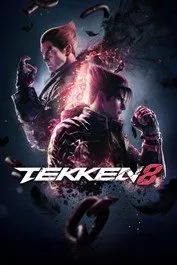 |
Tekken 826 January 2024PC PS5 Xbox Series S & X
|
This article may contain affiliate links, meaning we could earn a small commission if you click-through and make a purchase. Stevivor is an independent outlet and our journalism is in no way influenced by any advertiser or commercial initiative.


